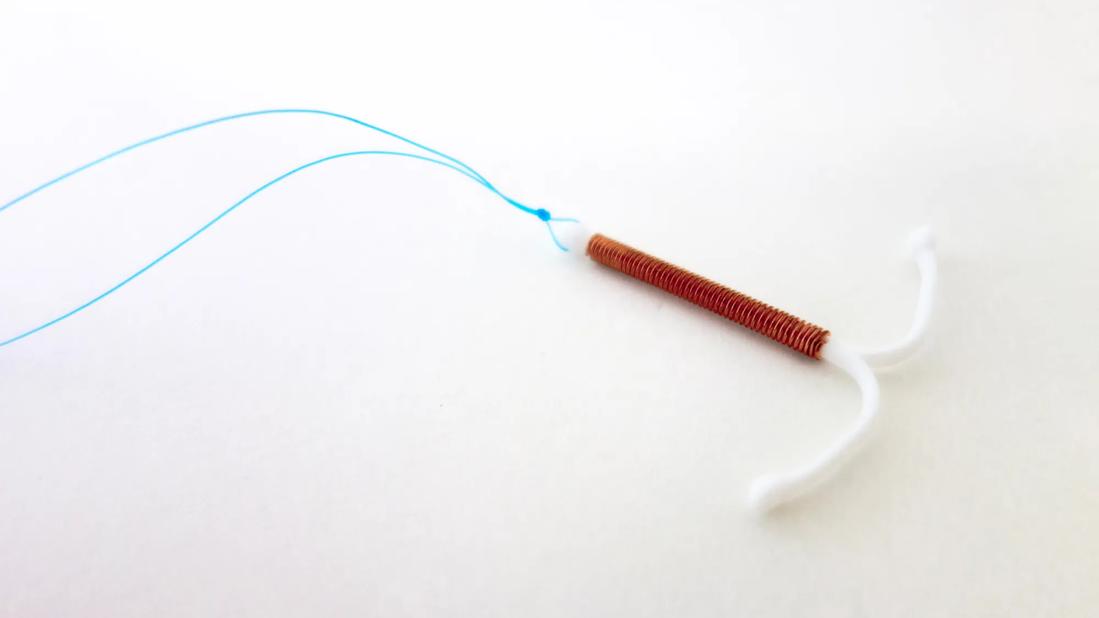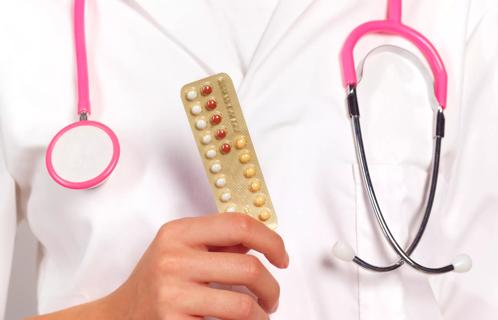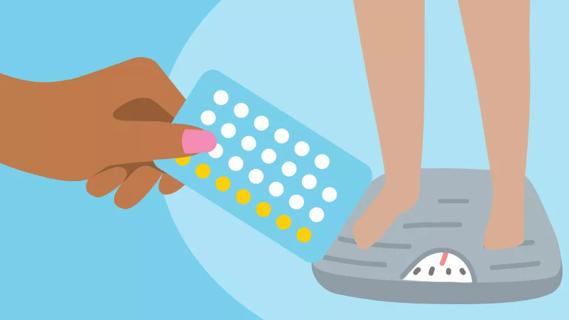IUDs can make your period lighter, heavier, irregular or stop it completely

An intrauterine device (IUD) is a highly effective form of birth control. In addition to assisting with family planning, certain types of IUDs can lighten menstruation and sometimes, stop periods altogether.
Advertisement
Cleveland Clinic is a non-profit academic medical center. Advertising on our site helps support our mission. We do not endorse non-Cleveland Clinic products or services. Policy
But is it healthy to not have a period with an IUD? And where does that period blood go?
OB/Gyn Erica Bishop, MD, answers these and other pressing questions about IUD periods.
IUDs are a type of long-acting reversible contraceptive (LARC) that can prevent pregnancy for three to 10 years. Healthcare providers insert this T-shaped device into the uterus during an in-office visit.
You may hear different things about the effects of IUDs on your period. Your best friend says they stopped having periods when they got an IUD. Your sister says they bled regularly (and heavily) when they had one.
Both can be true.
Depending on the type, an IUD may:
There are two types of IUDs.
And they can affect your period differently. Dr. Bishop explains why.
Hormonal IUDs release small amounts of the hormone levonorgestrel. It thickens cervical mucus and thins the lining of the uterus (endometrial lining).
That makes it harder for sperm to reach an egg and for a fertilized egg to attach to the uterus, causing pregnancy. The hormone also partially suppresses the release of an egg (ovulation).
Advertisement
There are several brands of hormonal IUDs, including:
A nonhormonal IUD has a copper wire that causes inflammation in the uterine lining. Inflammation makes it harder for a fertilized egg to implant and cause pregnancy.
ParaGard® is the only copper IUD with U.S. Food and Drug Administration (FDA) approval.
It can take three to six months for your body to adjust to an IUD, regardless of the type or brand.
IUD side effects are more likely to occur during this time. They can include things like:
These symptoms typically improve as your body gets used to the IUD. Talk to your provider if uncomfortable symptoms persist for six or more months after getting your IUD.
After the initial side effects, you may experience several period changes after getting an IUD.
Lighter, shorter periods are one of the many benefits of hormonal IUDs.
“The hormones prevent the uterine lining from thickening as it would during a normal menstrual cycle,” Dr. Bishop explains. “That’s why blood flow is lighter when you menstruate.”
A nonhormonal, copper IUD is more likely to cause heavy periods.
“Some people experience heavier-than-usual periods the first year after getting a copper IUD,” he continues. “ParaGard works for up to 10 years. After the first year, the periods tend to be more like regular menstruation.”
Skipped periods may happen with any hormonal IUD. But Mirena is the only one with FDA approval for treating heavy periods. The Liletta IUD, a generic hormonal IUD with the same dose of levonorgestrel as the Mirena, is also used for treating heavy periods.
Within the first year after insertion, about 2 in 10 people with Mirena or Liletta stop having periods.
“This can be especially helpful for people who have severe menstrual bleeding and pain,” Dr. Bishop suggests.
The other hormonal IUDs release lower amounts of levonorgestrel. You’ll probably still have periods, although they’re likely to be lighter and shorter.
You should continue to have periods with a nonhormonal IUD. If you skip a period with a copper IUD, take a pregnancy test and talk to your healthcare provider.
It’s fine not to have a period with a hormonal IUD, Dr. Bishop shares. “Some people mistakenly believe they need to have a period every month to clean out the uterus. But when the endometrial lining doesn’t build up, there’s nothing to ‘clean out.’”
For some people, not having a period is better than having one.
Your provider may recommend a hormonal IUD to stop periods if you have or are at risk for:
Advertisement
Period blood occurs when the uterus sheds its lining during the menses phase of a menstrual cycle.
If you have a hormonal IUD and stop having a period, period blood doesn’t go anywhere because it never existed. The lining didn’t thicken, so there’s nothing for the uterus to expel.
At first, hormonal and nonhormonal IUDs can make your menstrual cycle go ... well, off cycle. That can mean irregular periods.
Your periods should become more regular as your body adjusts to the IUD, usually within three to six months.
Period cramps tend to be less of an issue with hormonal IUDs.
“If you have cramps, they’re usually mild because you’re bleeding less,” Dr. Bishop points out.
And if you’re among those with a hormonal IUD who stop having a period, you shouldn’t have cramps at all.
But you’re more likely to have painful menstrual cramps with a copper IUD, especially if you also have heavy periods. Both of these symptoms are more common in the first year after insertion. Cramps and heavy periods should improve over time, though.
In some instances, painful cramps — with or without menstruation — can be a sign that an IUD is out of position.
“Less than 10% of people experience this problem,” Dr. Bishop reports. “But it is possible. So, it’s important to talk with a healthcare provider if you’re concerned that your IUD isn’t in place.”
Advertisement
If you’re having persistent pain or other issues, your provider may do an ultrasound to check the IUD’s position. If it’s out of place, they can remove the IUD and place a new one.
In addition to the discomforts, an IUD that isn’t in the proper position might not be able to do its job of preventing pregnancy. So, use a backup form of birth control (like condoms) in the meantime.
Bleeding between periods can occur with both hormonal and nonhormonal IUDs.
“Spotting can be annoying, but it isn’t usually cause for concern,” Dr. Bishop reassures. But if spotting is bothersome to you, talk to your provider about dealing with your symptoms.
You’re more likely to bleed between periods the first year after getting an IUD. This symptom, like others, should improve as your body adjusts to the IUD.
With 99% efficacy, IUDs are some of the most effective forms of birth control.
But no birth control method is foolproof.
If you have a copper IUD and your period is late you should take a pregnancy test and reach out to your provider. Also reach out if you have a hormonal IUD and show signs of pregnancy, like unexplained nausea, vomiting (morning sickness) or breast tenderness.
Other reasons to contact your provider include:
Advertisement
“IUDs can be a safe, effective way to prevent pregnancy and manage menstruation,” Dr. Bishop emphasizes. “Everyone’s needs are different. It’s important to talk to your provider about the best option for you.”
Learn more about our editorial process.
Advertisement

The Yuzpe regimen is less effective than other forms of emergency contraceptives, and it’s associated with more side effects

Both are about equally effective when used properly — IUDs are long-lasting and don’t require you to think about them

Birth control medications are more than 99% effective, but only when used properly

Today’s birth control pills don’t usually cause depression — but hormones affect everyone differently

No, you can’t prevent pregnancy by douching after sex, having sex standing up or having sex only at the ‘safe’ time

Birth control gel is simple to use and an effective method for preventing pregnancy

The scenarios vary based on how many pills you’ve missed and whether you take a combination pill or progestin-only pill

Despite popular opinion, scientific research shows that most birth control methods don’t contribute to weight gain

Babies can get congested easily, but you can calm their cough by keeping them hydrated, using nasal drops and running a humidifier

Weight loss may cause loose, sagging skin and muscle loss to your rear

Several conditions, like vitiligo and fungal infection, can cause a loss of pigmentation, leading to white spots or patches on your skin